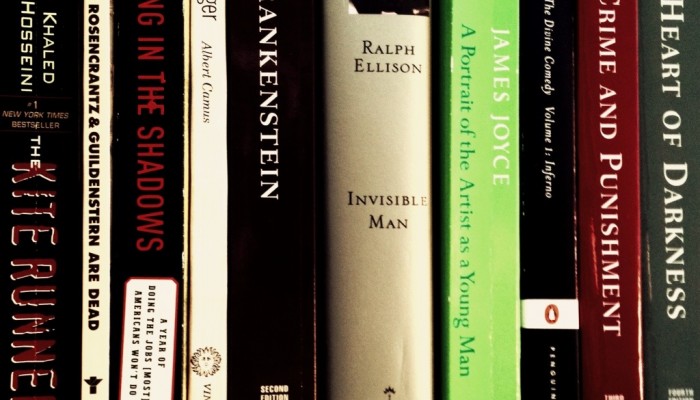
Is the Literary Canon Still Racist and Sexist?
This blog post was originally written for the Teaching Tolerance blog, but, as a mutual decision, we decided not to publish it. They were concerned that I was calling out the AP and College Board without sufficient evidence. My intention is not to call out anyone, only to bring to light some issues I was thinking about as I was attending the AP conference and planning my syllabus this summer. This was the information we got at the AP conference, but may or may not be accurate throughout the country. Furthermore, the list we received – linked within the post – is from 2006. Much may have changed since then. Regardless, the issue of which writers are included in the canon is still a valid one worth thinking about as we start this school year, and the canon is still very much decided by college professors and the writers of exams that test knowledge of literature, such as the AP Exam.
I’ve been asked to teach an Advanced Placement English literature class this coming school year, and I’m incredibly excited about it. This is a wonderful opportunity for me to flex my teacher-muscles and work with some of the best students in the school while preparing them to earn college credit for my class. As an added bonus, I get to choose what books to teach and how to teach them. Because of the AP Exam in May, I am limited to canonical – or classic – literature and texts of similar literary merit since that is what appears on the test but, from there, I can choose what I want.
You can imagine my excitement, then, as I sat down in front of my bookshelves and started pulling down books that were suggested AP texts. There I sat, surrounded by F. Scott Fitzgerald, Joseph Conrad, James Joyce, Kurt Vonnegut, and William Shakespeare. I eagerly dove into these books, trying to group them by themes and genres, but I stopped short. Something was missing. Where were the writers of color? Where were the women?
It’s no secret that the “dead white guys” – as my students like to call them – have dominated canonical literature since the beginning of the canon itself. Part of the problem was that those white guys were the only ones able to get published. Racism kept people of color out of schools and publishing houses since the beginning. Even once the tides started turning, authors of color did not find many places among the classics. Part of privilege is power, and those “literature experts” who decided such things as what will be taught in schools and, even, what literature can be deemed classic were mostly white men, and wanted to keep representing themselves in classic literature.
Even in the past decade, if you look at the list of texts most often used on the AP Exam, the top three books are by Fyodor Dostoevsky, Charles Dickens, and Joseph Conrad – each having been used seven times in the past ten years. Two books by Toni Morrison and one by Ralph Ellison, both African-American authors, have been used five times in the past decade, and Rudolfo Anaya, a Mexican-American author, and Zora Neale Hurston, an African-American author, have been cited four times. While this might show a nod towards racial and gender diversity, the list is still crowded with white, male authors. To make matters worse, many of these books are racist in and of themselves; Conrad’s Heart of Darkness, for example, includes some of the most racist depictions of colonial Africa in literature, and it is one of the most-cited books on the exam.
This made me pause, but did not make me give up hope. As their teacher, I not only owe it to my AP students to prepare them for the exam and life after high school, but it is also my duty to give them a plethora of voices and experiences in the literature I present them. I decided to not only include books by many of the authors of color on that list, but to go off of the list to select texts like The Kite Runner by Khaled Hosseini about a young boy coming of age in Afghanistan and feminist texts like The Awakening by Kate Chopin. On that portion of the exam, it is possible for students to use books that are not included on the list, and when enough of them do, the exam writers pay attention and start including other, more diverse books. Furthermore, I plan on teaching these books with accompanying critical essays that talk about issues such as racism and sexism within these classic novels.
It is possible to change the canon and, in the meantime, it is possible to change the way students look at the canon. Slowly but surely, teachers and students are chipping away at it and adding books that better represent the diversity of our nation and our classrooms. We just need to keep teaching books from all different perspectives and making our students aware of the struggle.
I’ve never been to school in America, but I remember reading multiple books by female authors for my English (foreign language) class. From the top of my head, I read Austen, the Brönte sisters, Elizabeth Gaskell. I remember doing a book report on Mary Barton and the social justice issues the story raises. Maybe these books are too easy for native speakers / not literary enough? I remember struggling with the language more than anything else (and enjoying the stories!). We also read Shakespeare and the like in class, though.
Pingback:Children of Color Need to See Themselves in Books | Care2 Causes
Pingback:Canons | baim2